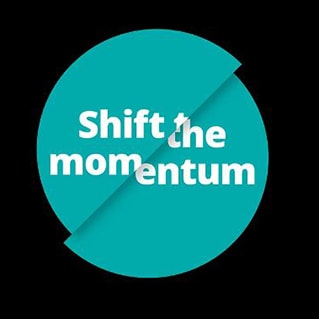The pattern continues down the line
The gender gap in technology is real. The 2022 Global Gender Gap Report shows that in the technology industry, only 24% of leadership roles are held by women.
In the United States, despite making up nearly half of the US workforce, women are still vastly underrepresented in the science, technology, engineering, and math (STEM) workforce, which also drives many careers in data. Women made gains — from 8% of STEM professionals in 1970 to 35% in 2021 — but men still dominated the field. Men made up 52% of all US workers but 68% of all STEM workers.
For some women, the numbers are even worse
Women in general may be frustrated with the glass ceiling, and the lack of other women in their field of data, but for some women the numbers are likely even more frustrating. Of the 25% of women working in tech in 2020 in the US, Asian/Pacific Islander women represent only 7%, Black women 3%, and Hispanic women 2%.
Take a closer look into the world of data positions. The 2022-2023 USA Diversity in Data Report found that Women hold just 26 percent of data and analytics jobs in the United States. The report also found that most of those are in entry level positions. Not too long ago, in 2019, nearly one in four data teams reported having no women at all.
Companies need women in data. They need diverse groups of women, too.
In an early attempt by a large online retailer to design a computer program to guide its hiring decisions, the company used submitted resumes from the previous decade as training data. Because most of these resumes came from men, the program taught itself that candidates who were men were preferable to women. While the company realized this tendency early on and never used the program to evaluate candidates, the example highlights how relying on biased data can reinforce inequality.
Not only do women bring a different perspective, but they can also bring creative thinking in data and AI to a whole new level. Imagine a 1960s advertising campaign for birth control designed only by men using data analysis from men. An HBR study analyzing the connection between productivity and gender diversity found that, among Western European companies, a 10 percent increase in the ratio of women to men in the workforce correlated with a 7 percent increase in market value.
A head start: Girls in school
Is it that girls are disinterested in computer science and engineering roles and that’s why there are less of them in the field? One study shows that stereotypes and images can have a profound effect on their perceptions. When an American girl thinks of an engineer or data scientist, they often imagine socially awkward, genius boys that they don’t relate to—they don’t see themselves belonging there. So, they are reluctant to choose the field. However, when stereotypes weren’t in play, the study found that girls and boys were equally interested. It’s time to change the narrative.
Consider, is there an opportunity to increase the enrollment for girls in robotics clubs? Could more be done to ensure that young girls are exposed to data science-type opportunities early on in settings that buck the stereotype?
Kristi Lamar, managing director and U.S. Women in Technology Leader at Deloitte Consulting LLP, notes, “Competence is not a function of gender but rather of belief, passion, and effort. Starting in kindergarten, we should intentionally provide girls with concrete opportunities to discover their natural wonder around technology.”
A cultural shift: Establish better work/life integration for women
Can you name the top five countries for women to work in? The distinction goes to smaller countries Iceland, Finland, Norway, New Zealand, and Sweden.
Being the best country to work in goes beyond just gender equality in the workplace. The World Economic Forum’s 2022 report evaluated health and survival, educational attainment, economic participation, and opportunity, as well as political empowerment in the aforementioned ranking. Establishing better work/life integration in countries that lag will likely require a major cultural shift, one that prioritizes flexible work arrangements, paid family leave, tuition assistance for continuous learning, and wellness initiatives. Only then can countries have a better foundation for guiding and nurturing more women in the workplace–including women in data.
Be intentional about flexibility and inclusion
With women still taking on the brunt of childcare duties and domestic chores, flexibility in where, and how, work gets done is important. Companies can embrace remote work, flexible schedules, shared schedules, and consider varied phases like starting part-time and transitioning to full-time or vice versa. People want healthy work environments where they are valued, appreciated, and heard. Unfortunately, many women don’t feel included and gender bias is still a significant concern. By raising awareness of gender equity, companies can help close the gender gap by being intentional, understanding the gaps, and taking the steps to promote a true cultural shift. When companies make a point to build diverse teams that include people from different races, genders, backgrounds, interests, and geographies, research has shown that their teams—and businesses—can perform better.
What does success on “women in data” look like?
The issue is really twofold. Maybe it’s not so much “women in data” as it is “women and data” that needs the attention of both corporations and academia alike and in true alarm fashion. The women from AI Now Institute, New York University, point out in their Discriminating Systems report that it’s not just the bias in data and AI that should be evaluated, but the environments in which the technology is being built, and the people who build them.
Both women and data have suffered from past workplace and societal inequities that existed long before the girls participating in Girls Who Code were born and long before today’s current datasets were compiled. The world has a way to go before those glass ceilings are broken for good and data is clean and free-flowing.




